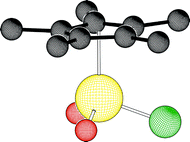Organorhenium(vii) and organomolybdenum(vi) oxides: syntheses and application in olefinepoxidation
Abstract
The first members of the classes of the organorhenium(VII) oxides and organomolybdenum(VI) oxides were described during the 1960s and 1970s. However, despite the fact that


 Please wait while we load your content...
Please wait while we load your content...